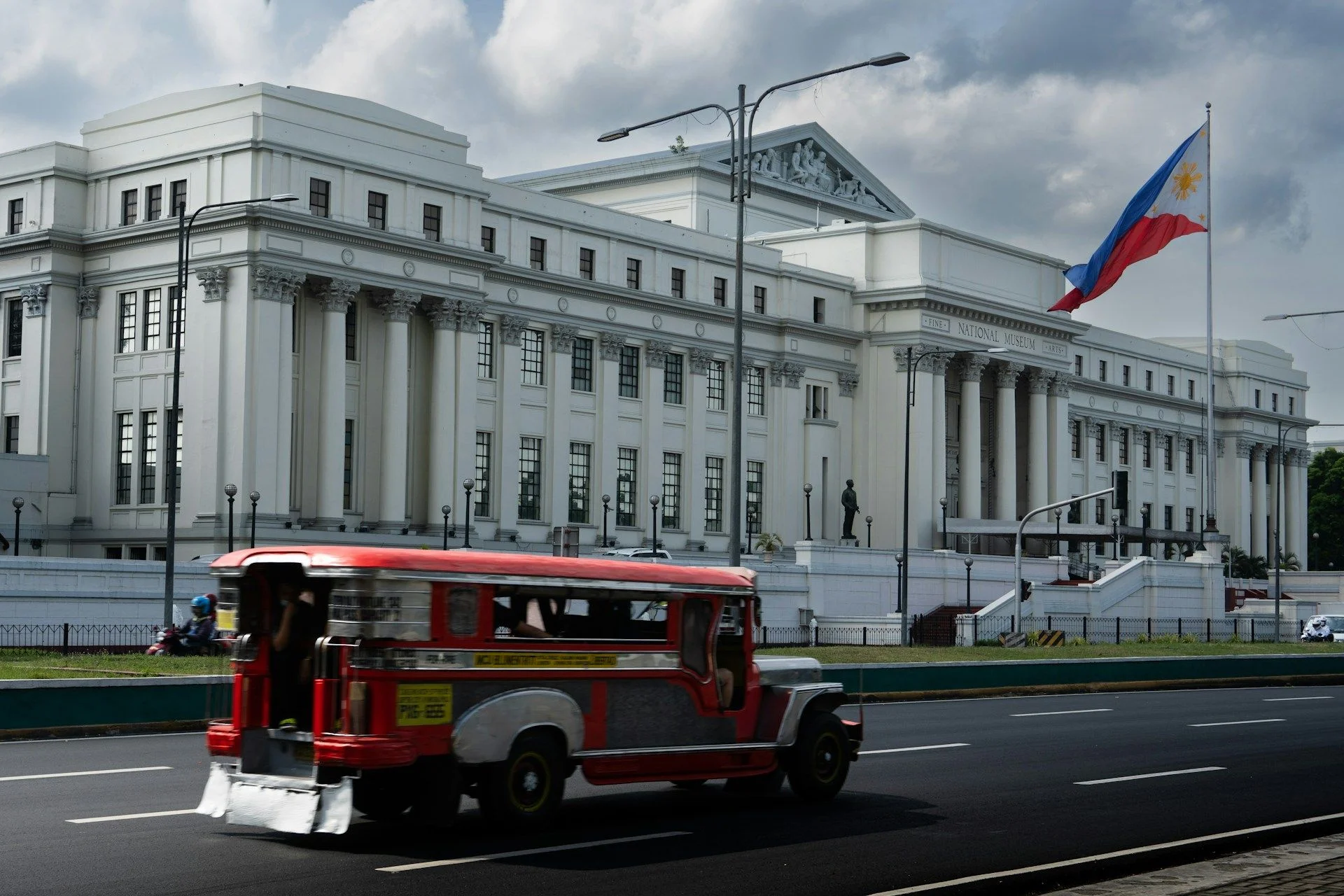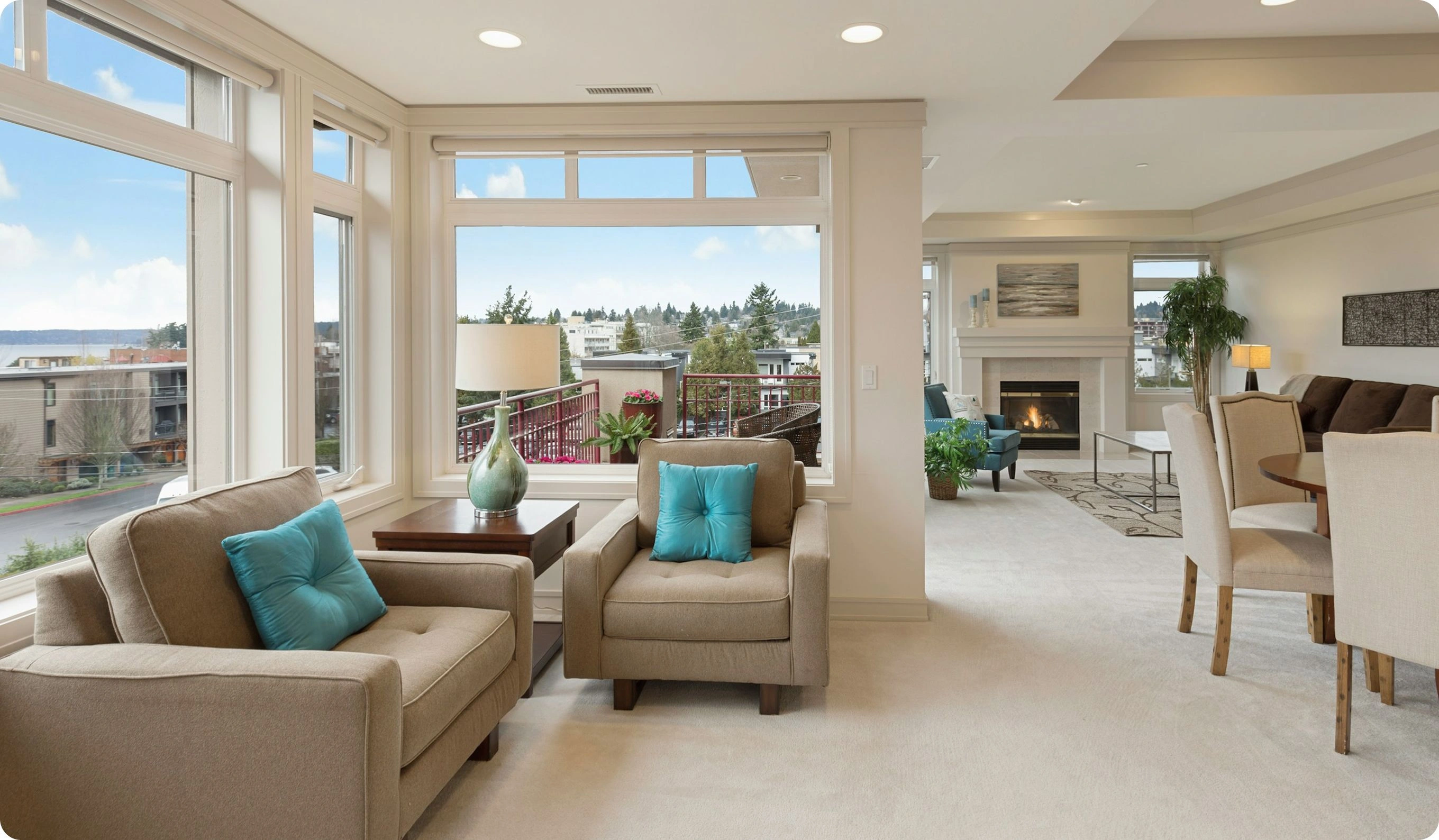Your Ultimate Manila Travel GuideHistoric Intramuros walks, vibrant streetfood, modern skyline views

Advantages of traveling
to Philippines
Intramuros Heritage Tours
Step back into Spanish colonial Manila: explore Fort Santiago’s ramparts, visit San Agustín Church’s UNESCO-listed interiors, ride a kalesa through cobbled streets, and learn Manila’s layered history from expert guides.
Pasig River Cruises
Glide aboard a restored riverboat at sunset, watch city lights reflect on gentle currents, pass beneath historic bridges, and enjoy onboard commentary on Manila’s development from Spanish-era ports to today’s skyscrapers.
Culinary & Nightlife Hotspots
Savor halo-halo and lechon at Binondo’s street stalls, sample craft cocktails in Poblacion’s speakeasies, and dance to live OPM bands in Makati’s rooftop bars—Manila’s diverse neighborhoods pulse with after-dark energy.
Intramuros Heritage Tours
Step back into Spanish colonial Manila: explore Fort Santiago’s ramparts, visit San Agustín Church’s UNESCO-listed interiors, ride a kalesa through cobbled streets, and learn Manila’s layered history from expert guides.
Pasig River Cruises
Glide aboard a restored riverboat at sunset, watch city lights reflect on gentle currents, pass beneath historic bridges, and enjoy onboard commentary on Manila’s development from Spanish-era ports to today’s skyscrapers.
Culinary & Nightlife Hotspots
Savor halo-halo and lechon at Binondo’s street stalls, sample craft cocktails in Poblacion’s speakeasies, and dance to live OPM bands in Makati’s rooftop bars—Manila’s diverse neighborhoods pulse with after-dark energy.

Useful articles
and recommendations from experts
Tourism in Manila: A Complete Guide
Manila, the bustling capital of the Philippines on the eastern shore of Manila Bay, offers an unforgettable blend of historic depth and modern dynamism. Tourism in Manila spans centuries-old Spanish forts, colonial churches, world-class museums, and vibrant street-food scenes. Whether you’re tracing the walls of Intramuros, sampling street eats in Binondo, or cruising along the Pasig River at sunset, travel experiences in Manila deliver contrasting layers of past and present. The city’s extensive network of Light Rail Transit (LRT), Metro Rail Transit (MRT), buses, and ride-hail services ensures that how to visit Manila is both accessible and rewarding for first-time visitors and seasoned travelers alike. This guide outlines the best tours in Manila, practical logistics, insider tips, seasonal patterns, and curated itinerary recommendations, enabling you to craft a seamless, enriching journey through this multifaceted metropolis.
Why Manila is attractive for travelers
Manila’s enduring appeal lies in its remarkable confluence of heritage, culture, and cosmopolitan energy. Intramuros—the Walled City—preserves Spanish colonial legacies in stone ramparts, baroque churches, and cobblestone streets, offering immersive heritage tours of Fort Santiago, San Agustín Church, and Casa Manila. Across Rizal Park (Luneta), the monument to national hero José Rizal stands amid sprawling gardens and reflecting pools, anchoring Manila’s national identity. Beyond historic cores, the city pulses with contemporary vibrancy: Binondo, the world’s oldest Chinatown, serves as a street-food mecca where vendors dish out steaming bowls of mami, dumplings, and fusion delicacies. Modern Manila unfolds in Makati’s gleaming business district—home to towering malls, art galleries, and Michelin-starred restaurants—while Bonifacio Global City (BGC) showcases public art installations and dynamic nightlife. Cultural institutions such as the National Museum complex and Cultural Center of the Philippines host rotating exhibitions and performances, highlighting Filipino artistry. From sunrise heritage walks to midnight rooftop cocktails overlooking glittering skyscrapers, Manila’s varied offerings explain why tourism in Manila continues to attract history buffs, food lovers, and urban explorers from around the globe.
Main types of tourism in Manila
Manila supports a broad spectrum of tourism styles and best tours in Manila:
- Cultural & Heritage Tourism – Guided walking and kalesa-carriage tours in Intramuros; visits to Rizal Park, Fort Santiago, and the National Museum of Fine Arts.
- Culinary & Street-Food Tourism – Binondo food crawls sampling pork dumplings, hopia pastries, and halo-halo; night markets in Malate and Quiapo offering local delicacies.
- River & Sunset Cruises – Pasig River boat tours at dusk with dinner buffets and cultural commentary; Manila Bay sunset sailings featuring live music and skyline vistas.
- Shopping & Entertainment Tourism – Mega-malls like SM Mall of Asia, Glorietta, and Greenbelt; upscale boutiques in Rockwell; pop-up markets and live-music bars in Poblacion.
- Art & Performance Tourism – Exhibits at the National Museum complex; theater productions at the Cultural Center of the Philippines; jazz nights in Makati speakeasies.
- Urban Green & Wellness Tourism – Morning yoga in Ayala Triangle Gardens; birdwatching in Arroceros Forest Park; spa treatments using local botanicals in BGC.
Unique attractions and experiences
Beyond the classics, unique travel experiences in Manila await adventurous visitors. Explore hidden tunnels beneath Intramuros on specialist heritage tours, or wander the narrow alley galleries of Escolta, where murals and street-art celebrate Filipino creativity. Food adventurers can join off-peak sari-sari market safaris in Tondo, sampling puso (rice in banana leaves) with skewered offal. For modern culture, book a backstage visit at the Metropolitan Theater or attend a live graffiti-tour in Mandaluyong. Thrill-seekers can arrange a sunset helicopter flight from the Domestic Airport, circling Manila Bay, Rizal Monument, and the casino district at golden hour. Each of these best tours in Manila goes beyond guidebook staples, revealing the city’s hidden layers and contemporary pulse.
Practical tips for travelers
Planning how to visit Manila is easier with these insider Manila travel tips:
- Transport: Avoid rush-hour congestion (7–9 AM, 5–8 PM). Use LRT-1 (North Avenue to Baclaran) and MRT-3 (North Avenue to Taft) for north-south travel. Ride-hail apps (Grab, Angkas) offer car and motorbike taxis. Jeepneys and UV Express vans connect inner districts.
- Accommodation: Choose based on focus: Intramuros for heritage; Makati/BGC for business and nightlife; Malate for budget and arts; Binondo for food tours. Reserve at least one month ahead during peak season.
- Currency & Payments: Philippine peso (PHP) is universal; ATMs and credit cards are widely accepted in malls and hotels, but small vendors operate cash-only—carry small bills and coins.
- Health & Safety: Use bottled water. Beware of pickpockets in crowded areas. Keep valuables secured. Apply sunscreen and stay hydrated outdoors.
- Etiquette: Greet with “Kamusta po” (hello/respect). Remove shoes before entering rural homes or small temples. Ask permission before photographing individuals, especially vendors and worshippers.
Seasonal demand and visitor flows
Manila’s tropical savanna climate and festival calendar shape tourism in Manila: Dry Season (December–May): Cooler mornings and minimal rain make outdoor exploration ideal—hotel and tour rates surge by 20–30 % during Christmas, New Year, and the Manila International Book Fair in February. Shoulder Season (June–August): Occasional showers lower crowds at Intramuros and malls; accommodations offer discounts up to 15 %. Wet Season (September–November): Frequent downpours can disrupt open-air plans; focus on covered attractions like museums and markets. Festival Highlights: Ati-Atihan (January), Flores de Mayo (May), and Parada ng Lechon (June) animate streets with colorful parades and rituals. Aligning your trip with these seasonal patterns and best tours in Manila ensures optimal weather, value, and cultural immersion.
Travel planning recommendations
To craft a concise Manila-focused itinerary, consider these day-by-day recommendations:
- Day 1 (Historic Core): Morning Intramuros—Fort Santiago, San Agustín Church, Casa Manila; kalesa ride. Lunch at Barbara’s Heritage Restaurant. Afternoon Rizal Park and National Museum. Pasig River cruise at sunset.
- Day 2 (Culinary & Cultural): Binondo food crawl—mami, dumplings, hopia. Visit Binondo Church and Ongpin Street. Afternoon art galleries on Escolta. Evening OPM concert at the Music Museum.
- Day 3 (Urban Green & Markets): Sunrise yoga at Ayala Triangle Gardens. Brunch and local crafts at Salcedo or Legazpi Market. Spa in Makati. Dinner/drinks in Poblacion rooftop bar.
- Day 4 (Shopping & Entertainment): SM Mall of Asia and Mall of Asia complex. Seaside Dampa seafood lunch. 4DX cinema. Evening live music in Eastwood City.
- Day 5 (Hidden Gems & Farewell): Dawn mural tour in Mandaluyong/Pasig. Coffee at Kanto Freestyle Breakfast. Late lunch in Paco. Sunset stroll on Baywalk. Depart via NAIA.
For peak-season travel experiences in Manila, reserve accommodations and tours (river cruise, heritage walks, food safaris) at least two months ahead. Book cultural-event tickets one month before. Download offline maps (Maps.me) and ride-hail apps. Pack lightweight, breathable clothing, comfortable walking shoes, a portable umbrella, sunscreen, and a reusable water bottle. Secure comprehensive travel insurance covering urban and water-based activities. By following these strategies on how to visit Manila, you’ll unlock the city’s most engaging travel experiences in Manila, ensuring a seamless, enriching, and deeply memorable metropolitan journey.
